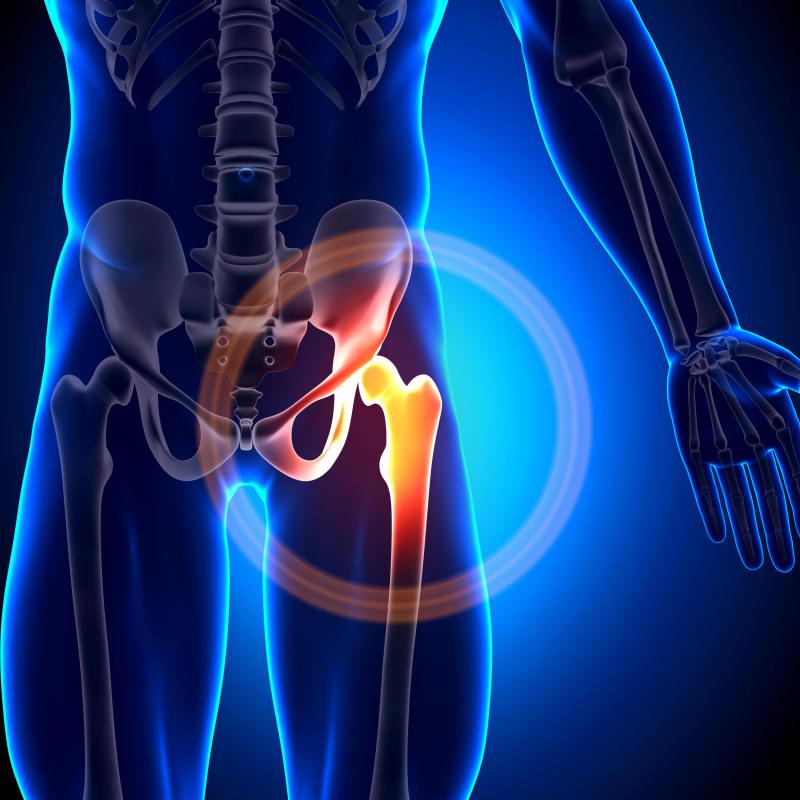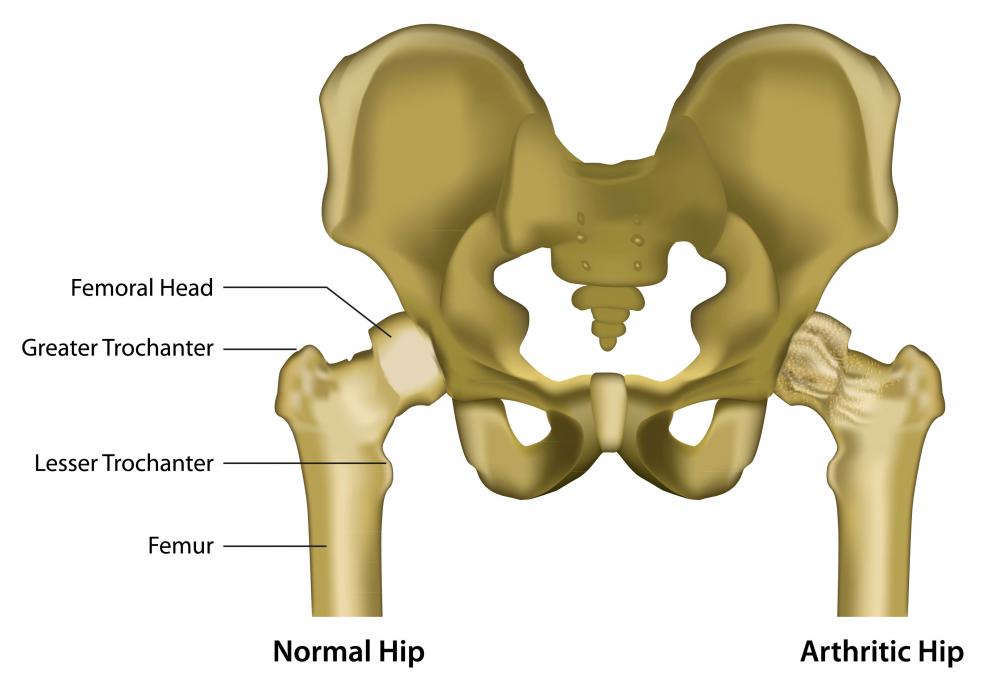At TheHealthBoard, we're committed to delivering accurate, trustworthy information. Our expert-authored content is rigorously fact-checked and sourced from credible authorities. Discover how we uphold the highest standards in providing you with reliable knowledge.
What Is a Hip Misalignment?
The hip is comprised of three bones: the ilium, ischium and the sacrum. These bones fuse together to provide support of the trunk and allow for normal fluid movement of the body. The sacrum and the ilium, however, form a joint, an area that connects bones together which allows for movement. When a hip misalignment is present it can restrict proper movement and create pain issues and dysfunction.
A hip misalignment can be caused by some injuries, such as a fall or awkward movements, especially with rotational forces or twisting. Abnormalities in the musculature, ligaments and tendons surrounding and supporting the hip caused by tightness, spasms or weakness can also contribute to a misalignment by pulling the hip bone out of its natural position. Arthritis or degenerative changes to the joint are exacerbated by inflammation and pain, in addition to causing possible structural changes that can affect the hip’s positioning and functioning.

Since the hip acts as a trunk stabilizer at the point where the upper body attaches to the lower body, a hip misalignment can affect other parts of the body with pain and movement problems. When the hip is stuck or out of position, it can cause a chronic tightness in the hamstrings, the muscles that run through the back of the leg, connecting the upper leg to the lower leg. Pain and dysfunction may also radiate up into the low back area.

When the body experiences a misalignment of the hip and is not properly supported, pain, weakness and tightness can travel through the hip and pelvis area and into the legs. This can create torsion or twisting of the knee during walking to compensate for postural changes that can radiate into the foot, causing it to rotate inwardly or outwardly. This can affect the gait sequence, weight bearing and balance. It can also trigger pain in the lower leg and foot.

The most important treatment for a misaligned hip is prevention through routine stretching and strengthening of the hips, legs and back. However, once a hip misalignment is present, it is important to release the tension or spasms in the muscles, tendons and ligaments involved. It may also be necessary to coax the hip bone back into place through manipulation, also referred to as a chiropractic adjustment. Once appropriate hip position is attained, a comprehensive stretching and exercise program will help stabilize the area to prevent further problems.
AS FEATURED ON:
AS FEATURED ON:

















Discussion Comments
What do you do when your hips are out of alignment along with severe pain, inflammation as well the same in the rib cage caused by a mistake from a chiropractor adjustment on the L4/L5 level of the lower back?I don't understand how my hips and rib cage got messed up from the adjustment from the lower back but all I know is that this problem has been going on for over four months now, I've been to many other doctors, even tried a different chiropractor and nobody has fixed the problem.
I've had chronic back pain for years and the joints in the back but never my hips/pelvis and rib cage. I can't stand this anymore and I can't understand why nobody has been able to correct this mistake that happened to me by that other chiropractor. These so called specialist have done nothing for me, even physical therapy. Now I know why some people stay away from doctors. They've made me feel worse than I've ever felt in my entire life!
I had hip misalignment symptoms for months but it never occurred to me that this could be the cause of my pain. I guess my old doctor was not very good either because he always sent me home and told me to rest and take pain relievers.
My chiropractor was the one who said that I have a hip misalignment. He did some exercises/movements with my legs and said that one leg is longer than the other. Apparently, one other way to tell is to check the soles of shoes to see if one is wearing out more than the other.
After this visit with my chiropractor, I went to see a specialist and had an MRI. I was diagnosed with a misaligned hip and now I'm undergoing physical therapy for it.
@burcinc-- No, hip and pelvis are not the same thing. Sometimes people use them interchangeably but that's wrong. The hip is a joint between the thigh and the pelvis. The pelvis is a series of bones that basically hold the upper body.
As far as I know, the main symptom of a misalignment is pain in the lower back. If the misaligned bone puts pressure on a nerve, it can also cause nerve pain that resonates to the legs. Do you think you have a misaligned hip? Have you seen a doctor?
Lower back pain occurs with many other issues, so the only way to know if you have a misaligned hip is to have a physical examination by a doctor and maybe an MRI as well.
Are hip misalignment and pelvic misalignment the same? How do I know if my hips are misaligned?
Post your comments